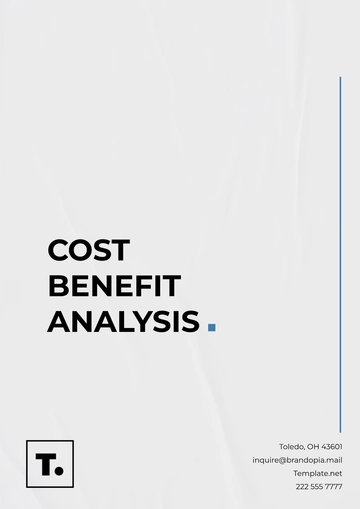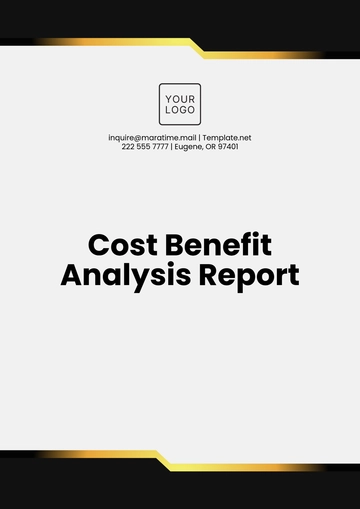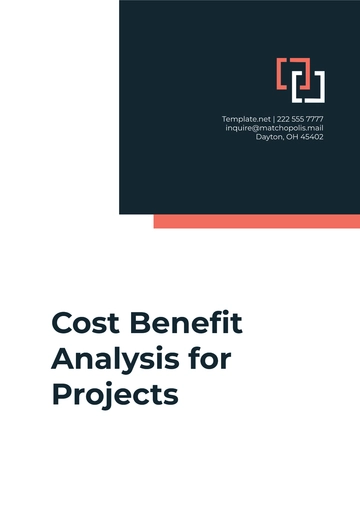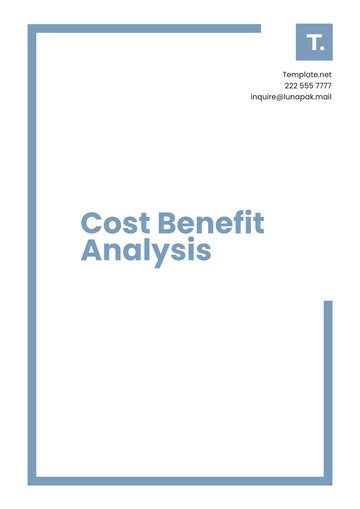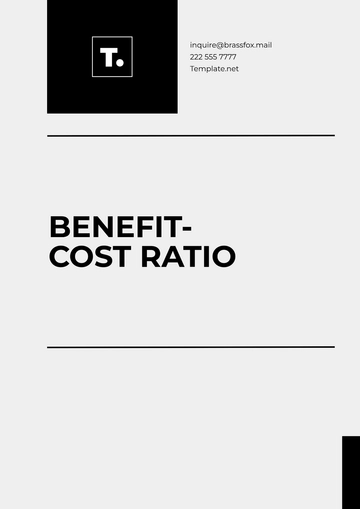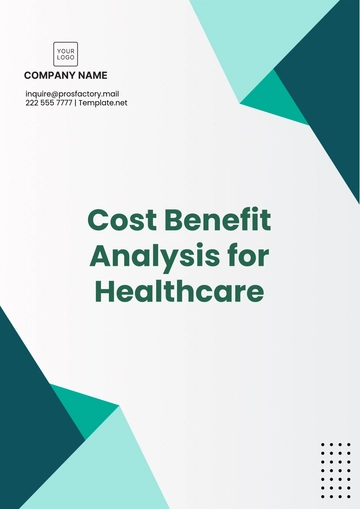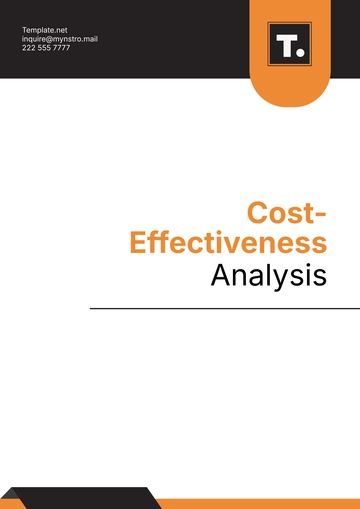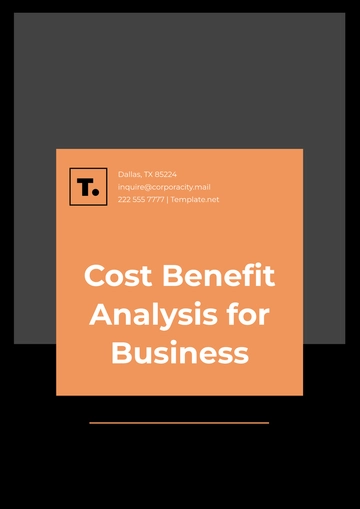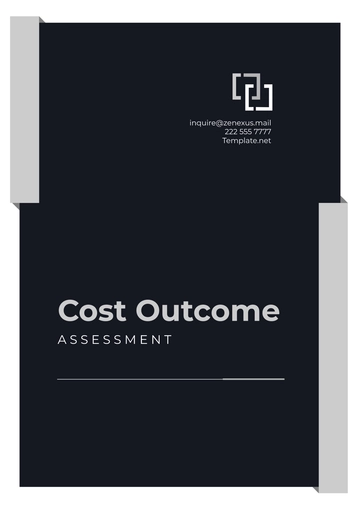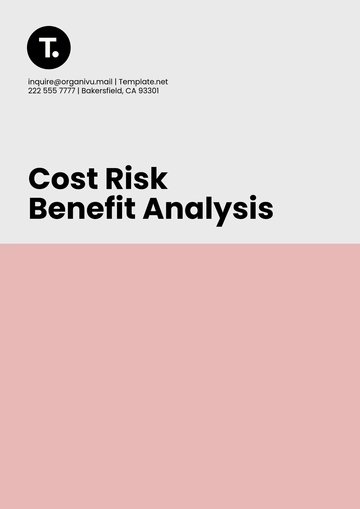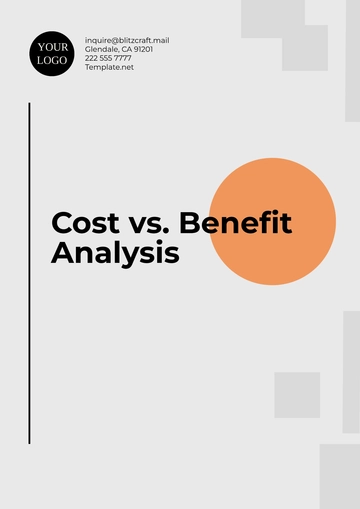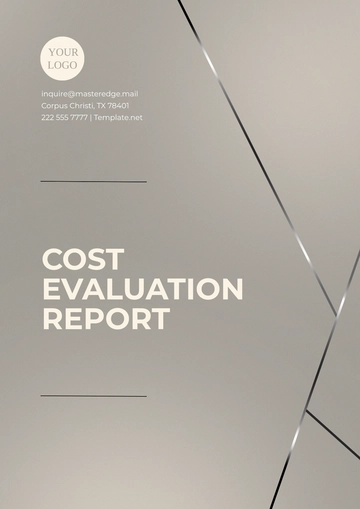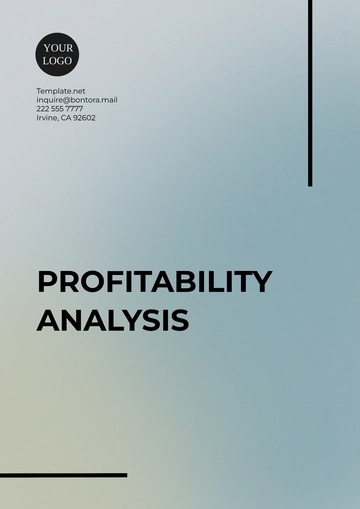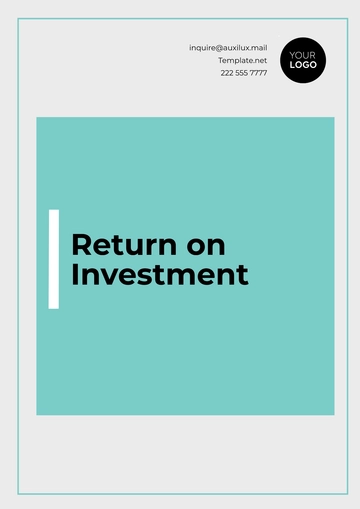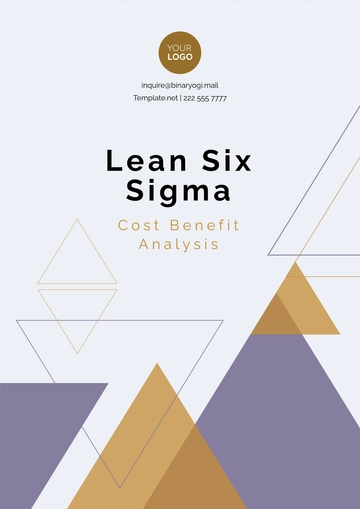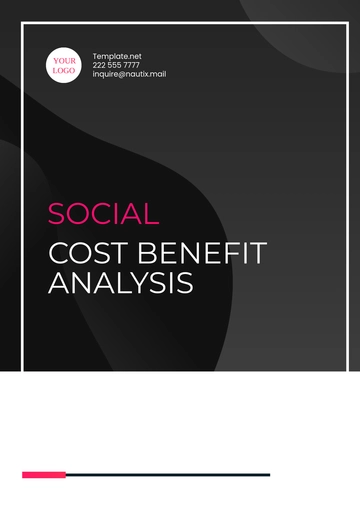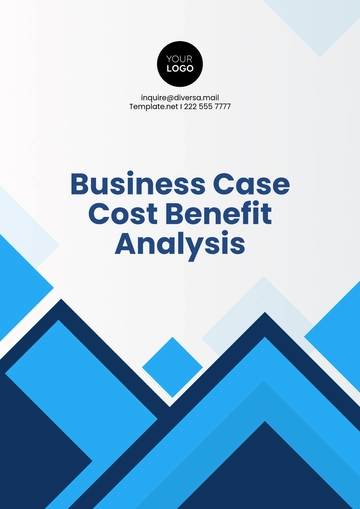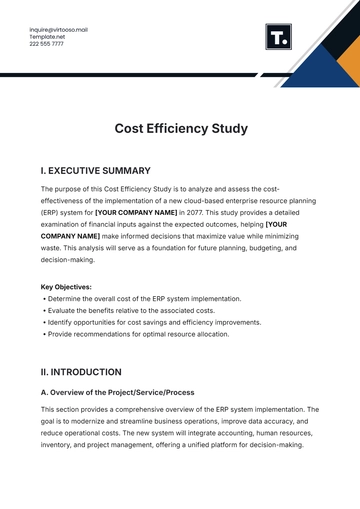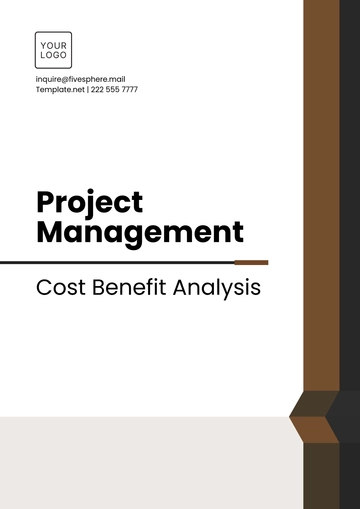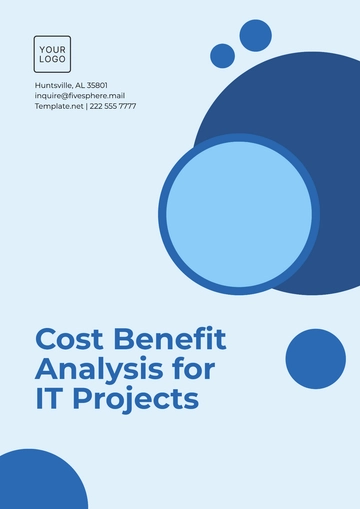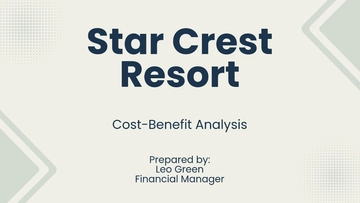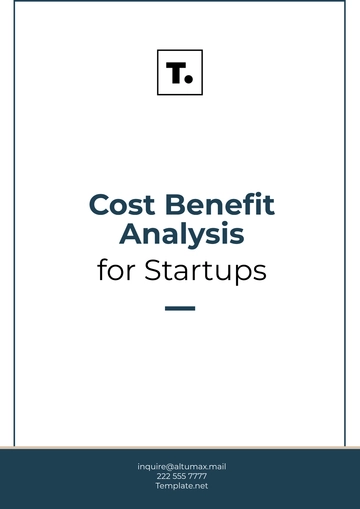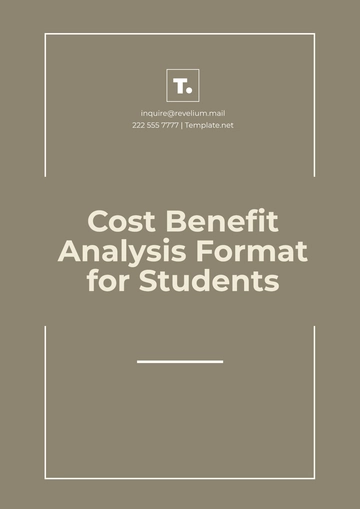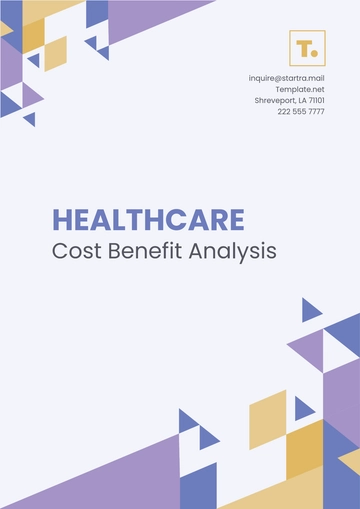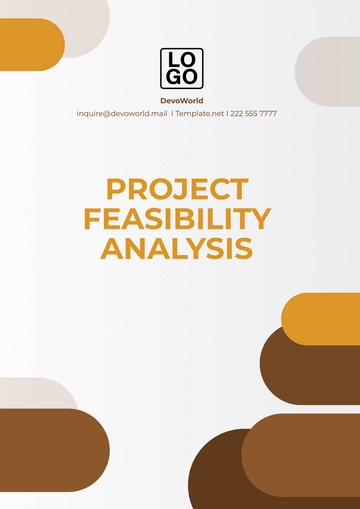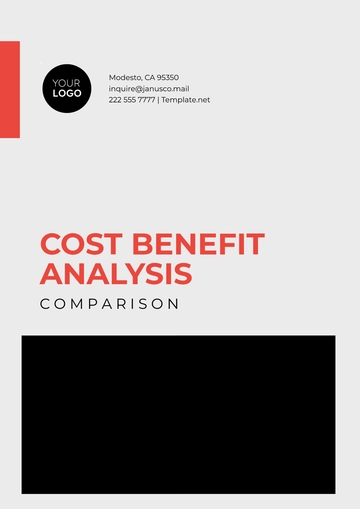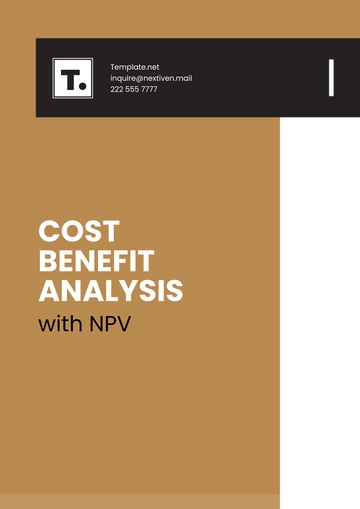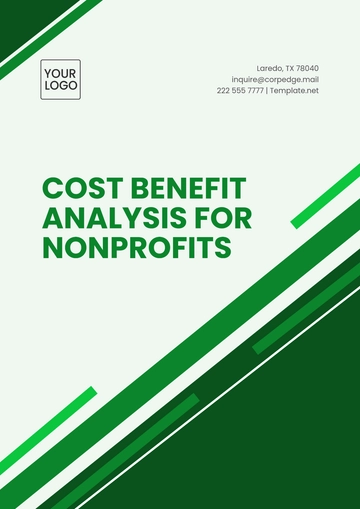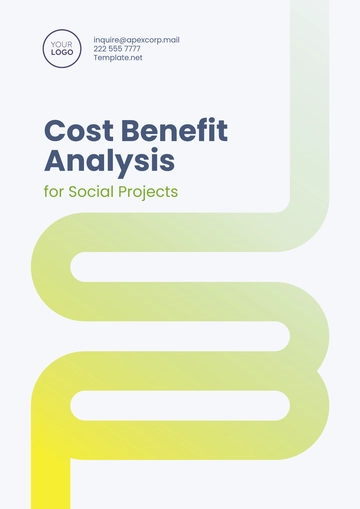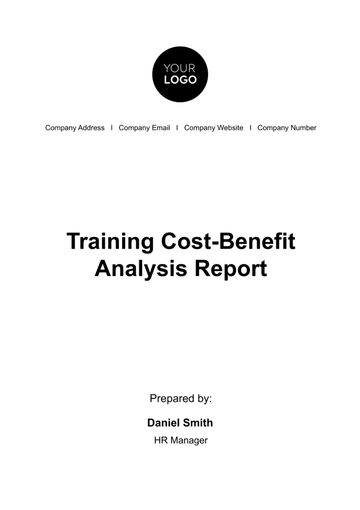Free Social Cost Benefit Analysis
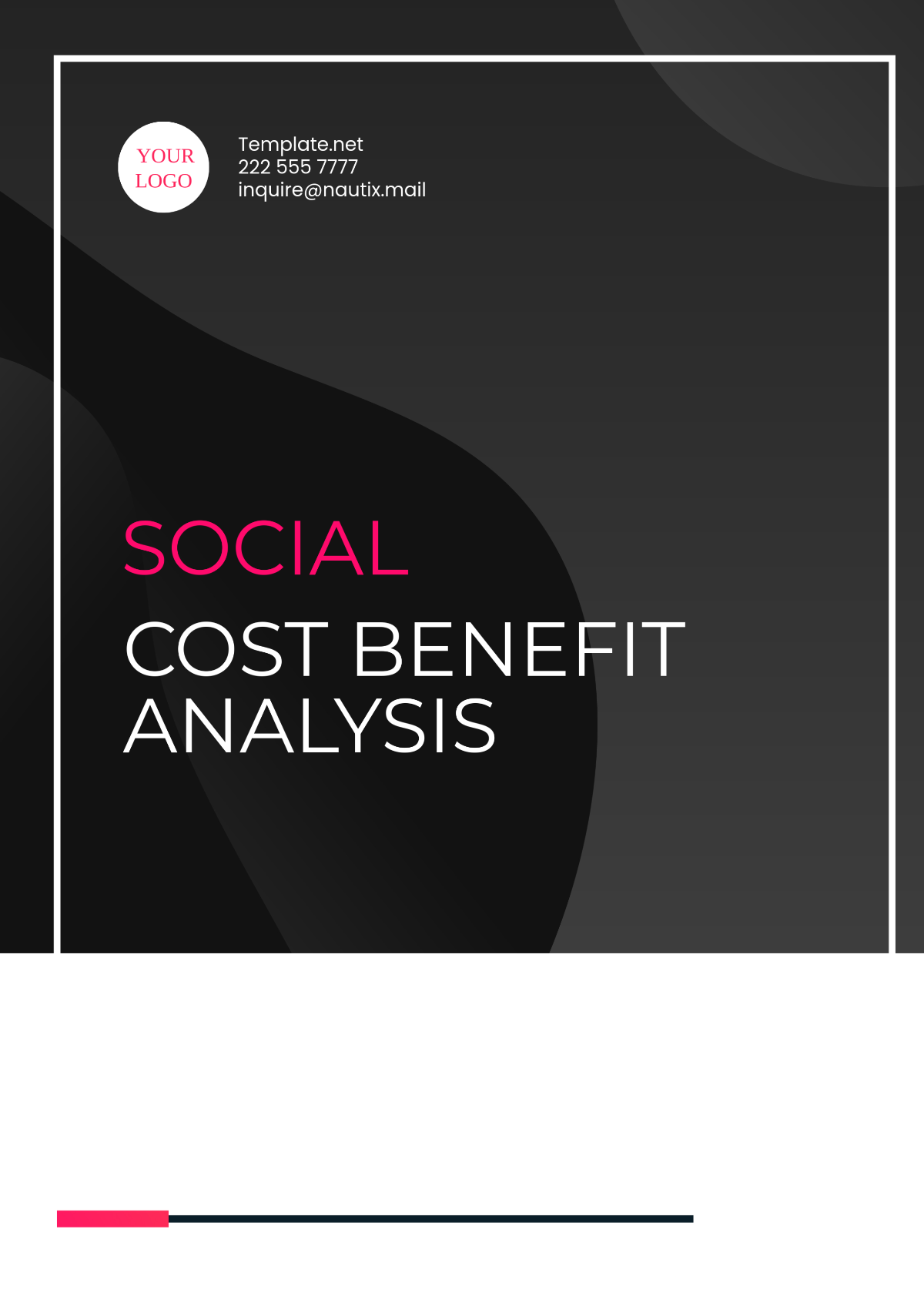
I. INTRODUCTION
A Social Cost Benefit Analysis (SCBA) is a systematic approach to evaluating the economic, social, and environmental impacts of a proposed project. The purpose of this analysis is to compare the costs of the "Green Park Urban Development" with its benefits, taking into account both private and social impacts. This analysis aims to ensure that the project delivers a net benefit to society and is economically viable.
II. OBJECTIVES OF THE ANALYSIS
The primary objectives of this SCBA are:
Assessing Economic Efficiency: To evaluate whether the Green Park Urban Development generates net positive benefits for society.
Incorporating Social and Environmental Impacts: To examine the broader societal and environmental effects beyond financial outcomes.
Supporting Decision-Making: To provide a foundation for informed decision-making regarding the project’s viability and sustainability.
III. SCOPE OF THE PROJECT
Project Name: Green Park Urban Development
Location: Downtown of Richmond
Duration: 5 years (2064–2069)
Key Stakeholders: City Government, [YOUR COMPANY NAME], local residents, environmental groups
Expected Outcomes:
Economic Impacts: Increase in local employment, rise in property values, enhanced local business revenue.
Social Impacts: Improved public health, enhanced community engagement, better quality of life.
Environmental Impacts: Reduction in urban heat island effect, increase in green space, improved air quality.
IV. COSTS
Direct Costs:
Initial Investment: $10,000,000 for land acquisition, construction, and infrastructure setup.
Operating and Maintenance Costs: $2,000,000 annually for park maintenance, security, and utilities.
Indirect Costs:
Social Costs: $1,000,000 for temporary displacement of local businesses during construction.
Environmental Costs: $500,000 for mitigating environmental damage during construction, such as air and noise pollution.
Externalities:
Positive Externalities: Increased property values for nearby homes ($2,000,000 in increased taxes annually).
Negative Externalities: Temporary traffic congestion during construction ($500,000 loss in productivity).
Cost Quantification and Discounting:
Time Horizon: 5 years
Discount Rate: 3%
Net Present Value of Costs:
NPV of Initial Investment: $10,000,000
NPV of Operating Costs (5 years): $9,515,000 (Discounted)
V. BENEFITS
Direct Benefits:
Economic Benefits:
Increased tourism revenue: $3,000,000 annually
Local business revenue increase: $1,500,000 annually
Social Benefits:
Improved public health due to green space: $500,000 annually in reduced healthcare costs
Increased recreational activities: $200,000 annually
Environmental Benefits:
Reduced urban heat island effect: $300,000 annually in energy savings
Carbon sequestration: $50,000 annually in environmental credits
Indirect Benefits:
Community Benefits: Enhanced community engagement and social cohesion, valued at $1,000,000 over 5 years.
Health and Well-being Benefits: Reduction in stress-related illnesses and improved mental health from access to green spaces, valued at $400,000 annually.
Benefit Quantification and Discounting:
Time Horizon: 5 years
Discount Rate: 3%
Net Present Value of Benefits:
NPV of Economic Benefits: $16,640,000 (Discounted)
NPV of Social Benefits: $4,000,000 (Discounted)
NPV of Environmental Benefits: $1,100,000 (Discounted)
VI. COST-BENEFIT RATIO AND NET PRESENT VALUE (NPV)
Cost-Benefit Ratio (CBR):
Formula: CBR = Total Discounted Benefits / Total Discounted Costs
Total Discounted Benefits: $21,740,000
Total Discounted Costs: $19,515,000
CBR Calculation: 1.11
Net Present Value (NPV):
Formula: NPV = Total Discounted Benefits - Total Discounted Costs
NPV Calculation: $21,740,000 - $19,515,000 = $2,225,000
VII. SENSITIVITY ANALYSIS
Key Assumptions:
Discount Rate: A higher discount rate (e.g., 5%) would reduce the NPV, lowering the attractiveness of the project. A 5% discount rate would lead to an NPV of $1,200,000.
Cost Estimates: If construction costs exceed estimates by 10%, the total costs would rise by $1,000,000, reducing the NPV to $1,225,000.
Benefit Estimates: If health benefits are underestimated by 20%, the NPV would decrease by $400,000, bringing it down to $1,825,000.
Results of Sensitivity Analysis:
High Discount Rate Impact: At a 5% discount rate, the project remains viable but with lower returns.
Increased Costs Impact: If construction costs rise, the project still has a positive NPV but with reduced net benefits.
Increased Benefits Impact: If the health benefits are greater than expected, the NPV could increase by $400,000, enhancing project attractiveness.
VIII. RISKS AND UNCERTAINTIES
Financial Risks:
Risk Factor: Unforeseen construction delays could increase costs by $500,000.
Mitigation Strategy: Secure contingency funding and build flexibility into the project timeline.
Operational Risks:
Risk Factor: Maintenance costs could rise due to unforeseen environmental factors (e.g., storms).
Mitigation Strategy: Allocate an additional 10% contingency in the operating budget.
External Risks:
Risk Factor: Regulatory changes could alter the scope of the project, leading to higher costs.
Mitigation Strategy: Engage with local authorities early to align on regulations and secure necessary permits.
IX. CONCLUSION AND RECOMMENDATIONS
Conclusions:
Overall Project Viability: The Green Park Urban Development project is economically viable with a positive net present value (NPV) of $2,225,000.
Social Impact: The project will provide significant benefits to the local community, including health improvements and social cohesion.
Economic Impact: The economic impact includes enhanced local business revenue and increased tourism.
Environmental Impact: The park will help mitigate urban heat and promote environmental sustainability.
Recommendations:
Action Steps: Proceed with securing funding and engaging stakeholders for project implementation.
Further Research: Conduct additional studies on long-term environmental impacts to ensure the project’s sustainability.
X. APPENDICES
Data Tables:
Table 1: Cost Breakdown – $10,000,000 initial investment, $9,515,000 operating costs (5 years).
Table 2: Benefit Breakdown – $16,640,000 economic benefits, $4,000,000 social benefits, $1,100,000 environmental benefits.
Models:
Model 1: Discounted Cash Flow Model – Used to calculate the NPV and CBR.
Assumptions:
Assumption 1: Discount rate of 3%.
Assumption 2: 5-year project duration.
XI. REFERENCES
Source 1: "Urban Green Spaces and Public Health" – Journal of Environmental Health, 2063.
Source 2: "The Economic Impact of Urban Parks" – Urban Studies Review, 2062.
Source 3: "Cost-Benefit Analysis of Public Projects" – Economics Handbook, 2061.
- 100% Customizable, free editor
- Access 1 Million+ Templates, photo’s & graphics
- Download or share as a template
- Click and replace photos, graphics, text, backgrounds
- Resize, crop, AI write & more
- Access advanced editor
Template.net’s Social Cost Benefit Analysis Template is perfect for evaluating social and economic impacts. Customizable and editable in our AI Editor Tool, it provides a detailed structure to weigh public costs against benefits. Ideal for policymakers, nonprofits, or businesses, this template ensures reliable, transparent analysis for socially impactful decisions.
